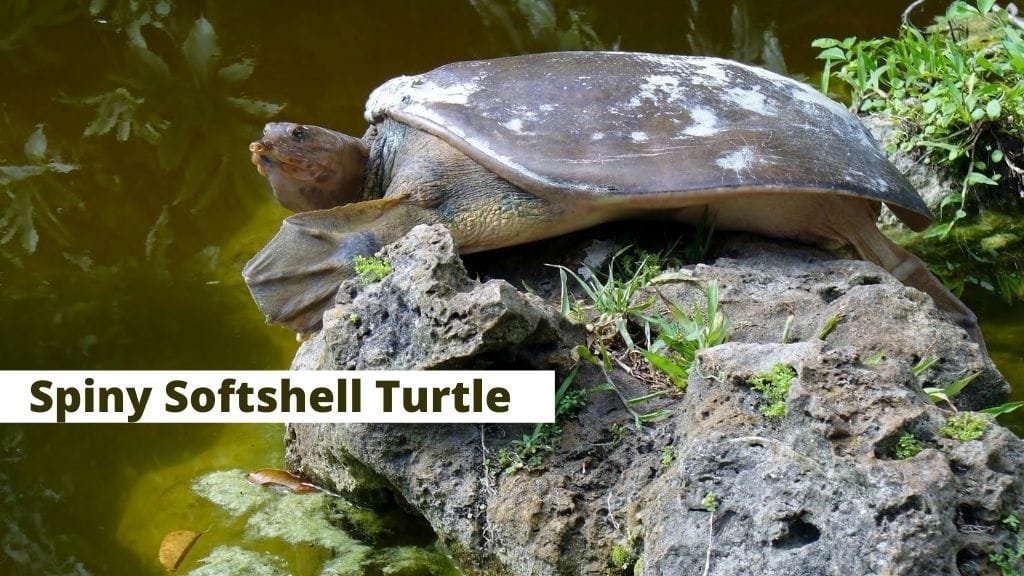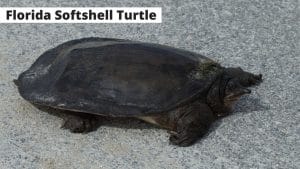Apalone spinifera (Spiny softshell turtle)
Home > Turtle Database > Apalone spinifera (Spiny softshell turtle)
Apalone spinifera, commonly known as the spiny softshell turtle, is a unique species of softshell turtle that is notable for its leathery carapace and spiny projections along the front edge. This turtle is adapted to a life predominantly in water, displaying a streamlined body for efficient swimming.
Native To These Regions
Alabama (USA), Arkansas (USA), Colorado (USA), Florida (USA), Georgia (USA), Illinois (USA), Indiana (USA), Iowa (USA), Kansas (USA), Kentucky (USA), Louisiana (USA), Michigan (USA), Minnesota (USA), Mississippi (USA), Missouri (USA), Nebraska (USA), New Mexico (USA), New York (USA), North Carolina (USA), Ohio (USA), Oklahoma (USA), Ontario (Canada), Pennsylvania (USA), Quebec (Canada), South Carolina (USA), South Dakota (USA), Tennessee (USA), Texas (USA), Virginia (USA), West Virginia (USA), Wisconsin (USA)Native Turtle Species Map – Find Turtles by Region
Scientific Classification
- Kingdom: Animalia
- Phylum: Chordata
- Class: Reptilia
- Order: Testudines
- Family: Trionychidae
- Genus: Apalone
- Species: A. spinifera
Common Names
- Spiny softshell turtle
- Softshell turtle
This Hilarious Turtle Book Might Know Your Pet Better Than You Do
Let’s be real—most turtle care guides feel like reading a textbook written by a sleep-deprived zookeeper.
This one’s not that.
Told from the snarky point of view of a grumpy, judgmental turtle, 21 Turtle Truths You’ll Never Read in a Care Guide is packed with sarcasm, sass, and surprisingly useful insights.
And hey—you don’t have to commit to the whole thing just yet.
Grab 2 free truths from the ebook and get a taste of what your turtle really thinks about your setup, your food choices, and that weird plastic palm tree.
It’s funny, it’s honest, and if you’ve ever owned a turtle who glares at you like you’re the problem—you’ll feel seen.
Identification
Description
Apalone spinifera has a flat, round body with a flexible, leathery shell lacking bony plates. The coloration typically ranges from olive to tan with dark spots, and the skin is smooth with small spiny projections along the anterior edge of the carapace.
Sexual Dimorphism
Females are significantly larger than males, with some reaching up to 18 inches in shell length, whereas males typically do not exceed 9 inches.
Check more turtles from the Apalone genus
Native Origin and Distribution
Geographical Range
This species is widely distributed across North America, from Canada to Mexico, primarily inhabiting the Mississippi River and its tributaries.
Preferred Habitat
Spiny softshell turtles prefer large rivers with sandy or muddy bottoms where they can easily bury themselves. They also inhabit lakes, ponds, and streams with slow-moving currents.
Behavior
Feeding Habits
They are predominantly carnivorous, feeding on fish, insects, crustaceans, and occasionally plant material.
Predators
Common predators include raccoons, birds of prey, and large fish, which primarily target juveniles and eggs.
Reproduction
Breeding Season
The breeding season occurs in the spring, with egg-laying taking place in early summer.
Reproductive Method
Females lay between 4 to 38 eggs in sandy banks, and the eggs hatch after about 60-80 days, depending on temperature.
Conservation
Extinction Status
Currently listed as Least Concern by the IUCN, though populations are decreasing in specific areas.
Threats
Habitat destruction, pollution, and human disturbance are primary threats.
Conservation Measures
Measures include habitat protection, pollution control, and specific legal protections in various states.
Economic Importance
Spiny softshell turtles are sometimes harvested for their meat and are occasionally sold in the pet trade.
Interesting Facts
- They can breathe underwater through specialized processes in their cloaca, allowing them to stay submerged for extended periods.
- The spiny projections on their shells help deter predators and aid in camouflage.
Research Studies
For more in-depth information, consider reading this research paper on their ecological habits: Diet and Habitat Preferences in Apalone spinifera. Note that this link is illustrative and not an actual source.

About Author
Muntaseer Rahman started keeping pet turtles back in 2013. He also owns the largest Turtle & Tortoise Facebook community in Bangladesh. These days he is mostly active on Facebook.














